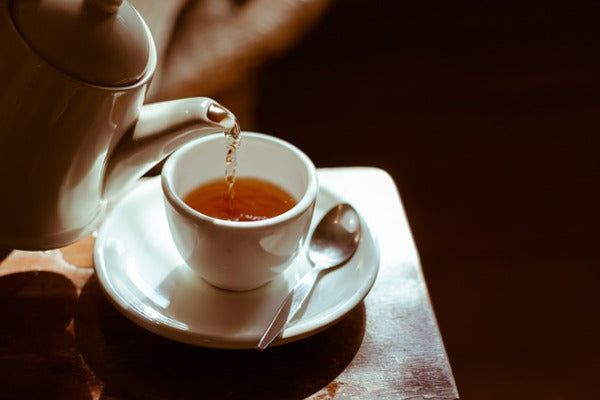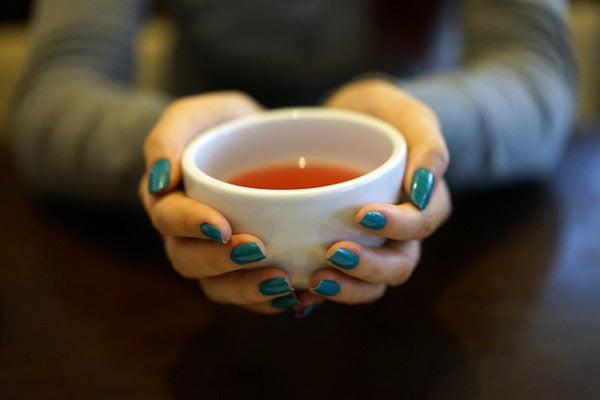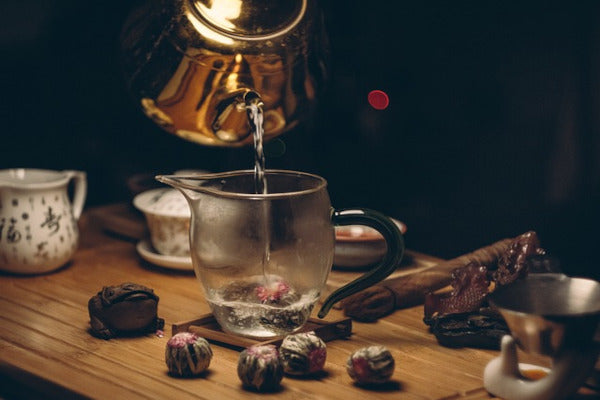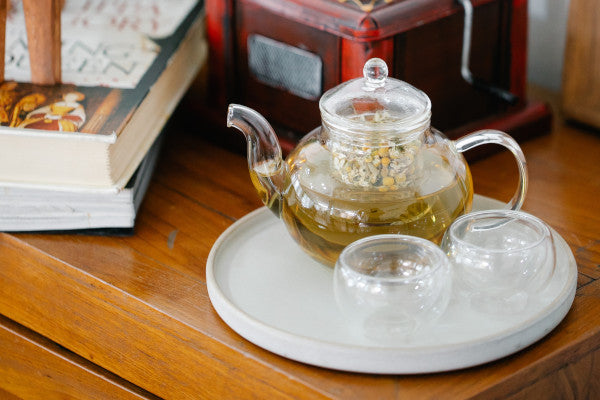It's one of the most expensive teas in Japan and of very high quality. It's carefully crafted to achieve an intense, textured, and full-bodied flavor. It's great to sip between meals or paired with fish. It has light vegetal notes and a sweet, subtle flavor. In this post, you'll learn what Gyokuro tea is.
A particular highlight of this Japanese gyokuro green tea is that its plantations are covered 20 days before harvest, creating shade that allows the leaves to concentrate more chlorophyll and L-theanine, resulting in a sweeter and more delicate tea. It has an umami taste, with notes of seaweed and lime, and a slightly astringent finish.
It can be drunk hot, cold, or even iced (excellent for those sweltering days). It's high in antioxidants (catechins and isoflavins), properties that inhibit the aging process and prevent cell deterioration.
The word Gyokuro means Jade Dew, and it's perhaps one of the few teas prepared at a low temperature. The leaves chosen for its preparation are those that emerge in spring, as this is where its nutrients and minerals are most concentrated.

Gyokuro tea cultivation
Gyokuro green tea is one of Japan's most prized green teas, long delighting imperial palates thanks to its aromatic and gustatory complexity. Its brewing and tasting are considered an art.
This tea differs from other green teas in the way it's made: the plants are covered with a bamboo and straw system to keep out the sun's rays. This system is applied to the plants before spring arrives, when the first shoots emerge.
This method stresses the plant so that it produces more chlorophyll, L-theanine, and less tannins. This method produces a tea with a sweet, emerald-colored flavor and prominent mineral notes.
Most Camellia sinensis buds for Gyokuro tea are hand-picked. This type of tea is expensive, but it's also difficult to obtain because it mostly remains in Japan.
As for its origin, we can say that Gyokuro was created accidentally. According to historians, it emerged in 1835 in Kyoto, Japan. Because the winter was very cold that year, local residents were forced to cover their tea plantations to prevent frost damage.
Tea gained great popularity in Tokyo when a tea merchant visited Kyoto and bought some tea buds, bringing them to the capital. The tea immediately became popular thanks to its rich flavor. In 1840, the cultivation method was perfected, and it acquired the name Gyokuro.

How to prepare Gyokuro tea
In Japan, gyokuro tea is so highly prized that even its preparation consists of three phases.
Ingredients:
- A spoonful of Gyokuro tea
- A lemon.
- A splash of soy sauce.
How to prepare it:
- Extracting the purity of the tea. When the leaves are hydrated with just a little water, only a small amount of infusion is obtained. To hydrate them, the water must be at a temperature of 60°C. The few resulting drops are distributed among the guests.
- Normal tea preparation. In this step, the leaves are covered with sufficient water. If the teapot holds 300 ml, 3 grams of Gyokuro tea should be added. Furthermore, since it is a fine tea, it can be repeated several times before moving on to the next step.
- Japanese Gyokuro Salad. At this stage, the leaves are sufficiently squeezed from the tea extracted. They should be spread out on a flat plate, sprinkled with lemon juice and a little soy sauce.

Properties of Gyokuro tea
Gyokuro Asahi green tea has a number of properties worth mentioning. It's worth noting that this green tea is one of the most expensive teas available, due to its very delicate and special cultivation process. Let's take a look at some of the properties of Gyokuro tea .
- High antioxidant content. EGCG is one of the antioxidants found in all green teas. Its functions include strengthening the immune system, speeding up metabolism, increasing energy, and burning fat.
- Prevents cancer. EGCG antioxidants reduce the risk of several types of cancer: prostate, pancreatic, ovarian, breast, and bladder.
- Keeps your heart healthy. Gyokuro tea prevents the buildup of fat in the arteries, which causes cardiovascular disease. Recommended for people with heart disease.
- It strengthens teeth and eliminates halitosis. This property often goes unnoticed. Its polyphenols, fluoride, and minerals help fight cavities and bad breath. It also protects against other infections such as gum disease and gingivitis.
- Controls glucose levels. Gyokuro tea maintains normal glucose levels, thus preventing diabetes.
- Activates the nervous system. Being rich in caffeine, it has an effect on the nervous system. Excellent for preventing depression, discouragement, and mild depression.
Side effects of Gyokuro tea
The effects of Gyokuro tea are the same as any green tea. If consumed in excess, it can cause stomach problems due to the presence of tannins, which increase stomach acid, affecting its walls.
Its umami flavor comes from its high levels of theanine. It's the fifth flavor of green tea, with sweet notes that make it an exquisite beverage.






